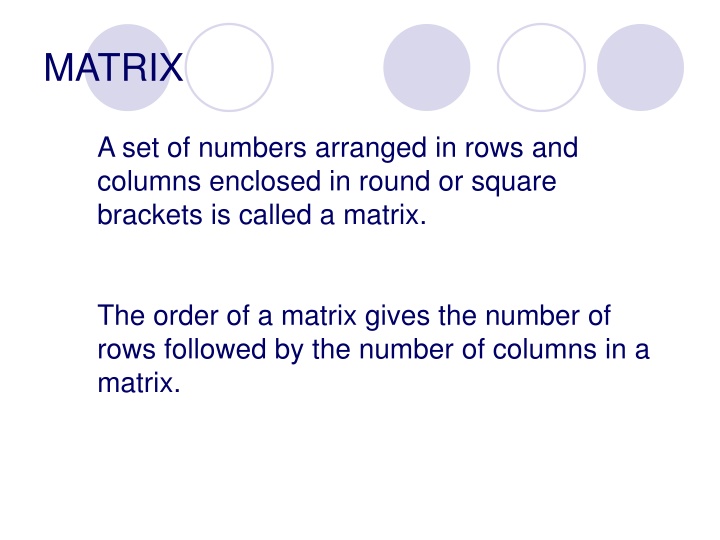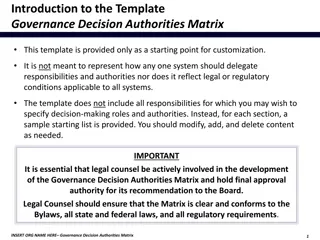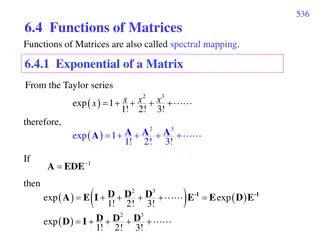
Matrix Operations - Basics & Rules
Dive into the world of matrices, from basic definitions like square and diagonal matrices to operations like addition, subtraction, scalar multiplication, and matrix multiplication. Learn about determinant, matrix inverses, and more. Master the rules of matrix algebra with clear explanations and examples.
Download Presentation

Please find below an Image/Link to download the presentation.
The content on the website is provided AS IS for your information and personal use only. It may not be sold, licensed, or shared on other websites without obtaining consent from the author. If you encounter any issues during the download, it is possible that the publisher has removed the file from their server.
You are allowed to download the files provided on this website for personal or commercial use, subject to the condition that they are used lawfully. All files are the property of their respective owners.
The content on the website is provided AS IS for your information and personal use only. It may not be sold, licensed, or shared on other websites without obtaining consent from the author.
E N D
Presentation Transcript
MATRIX A set of numbers arranged in rows and columns enclosed in round or square brackets is called a matrix. The order of a matrix gives the number of rows followed by the number of columns in a matrix.
MATRIX A matrix with an equal number of rows and columns is called a square matrix. A diagonal matrix has all its elements zero except for those in the leading diagonal (from top to bottom right). Two matrices are equal if, and only if, they are identical. This means they must be of the same order and the respective elements must be identical.
MATRIX You can only add or subtract matrices of the same order. To add, you simply add the corresponding elements in each matrix. To subtract, you subtract the corresponding elements in each matrix. Scalar multiplication: You can multiply a matrix by a number. Each element of the matrix must be multiplied by the number.
MATRIX Multiplication of matrices. It is possible to work out the product of two matrices according to the following rules: the number of columns in the first matrix must be equal to the number of rows in the second matrix. the order of the product of the matrices is the number of rows in the first matrix multiplied by the number of columns in the second. when multiplying, multiply the elements of a row of the first matrix by the elements in a column of the second matrix and add the products.
MATRIX If A and B are two matrices, then AB is not generally equal to BA. In other words, multiplication of matrices is not commutative. Determinant of a matrix: a A If b = = , A ad bc c d
MATRIX The inverse of a matrix: The inverse of a square matrix A is denoted by A-1 and A . A-1 = A-1. A = I, where I is the unit matrix of the same order as A.






















